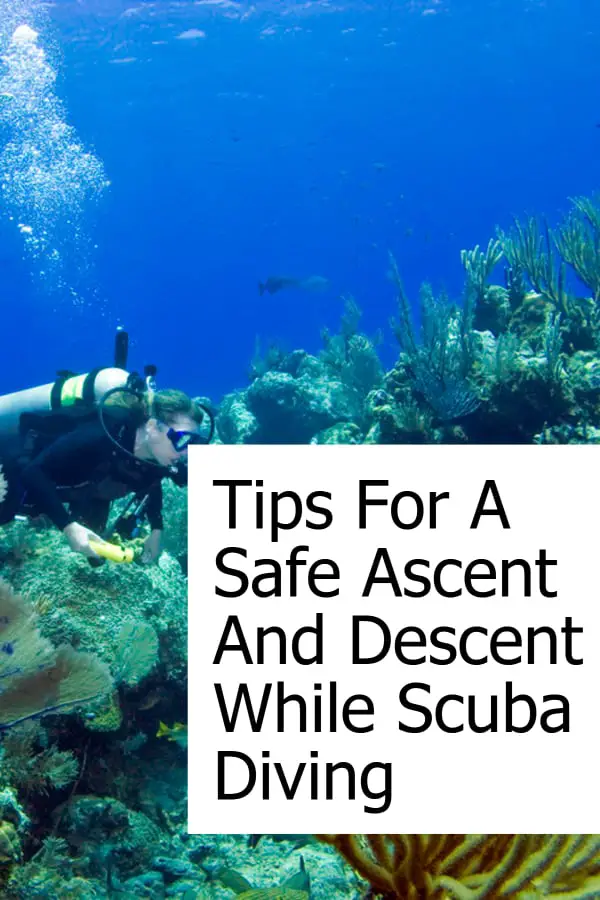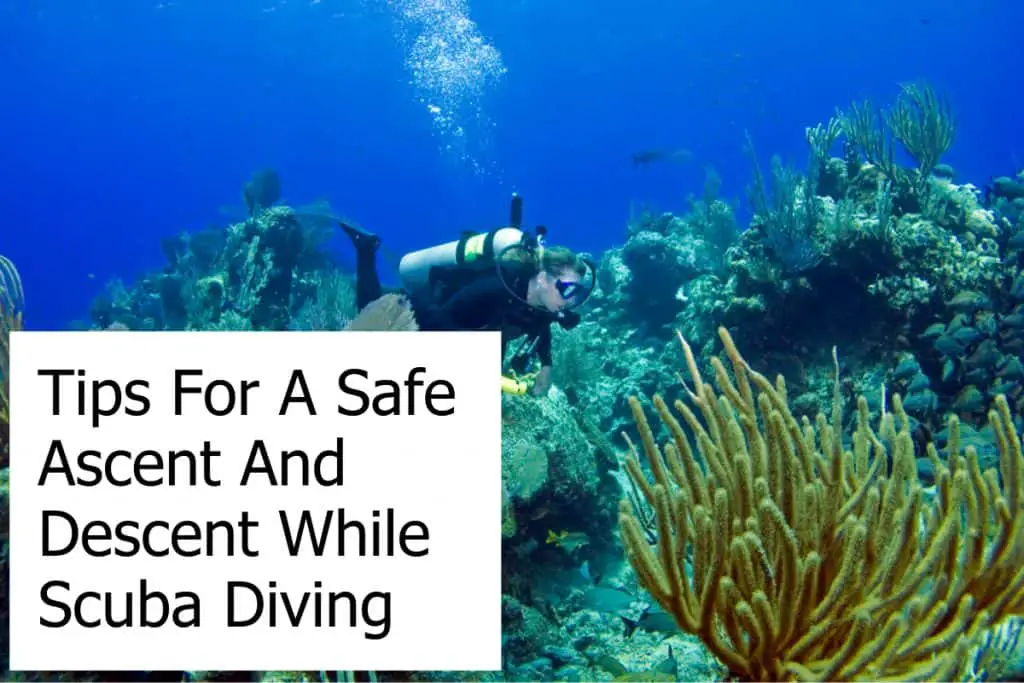Tips For A Safe Ascent And Descent While Scuba Diving
Most people only think of scuba diving as the magical sightseeing tour underwater where you somehow reach the right depth and then enjoy the sights. Barely anybody thinks of the descent to get to that depth or the ascent to come up from it.
Yet, both going down and coming up have their own safety hazards that you need to understand. Most divers experienced their ears starting to hurt when they descended too fast or that their buddy or teacher grabbed them to slow down their ascent.
A controlled and safe descent and ascent during diving is important and can prevent harm. First, we need to look at what makes both of these transitions unsafe, and then we’ll show how to avoid those factors. Your dives will be safer and more enjoyable.
Descent and Ascent Rate Tips and Recommendations
Let’s look at the different factors which you have to consider when diving. Most are of importance for your ascent and a few impact both your descent and ascent.
Speed
Going down or up too fast does not give your body time to adjust to the changing pressure around you. You should take your time on the way down as well as up to let your body adjust to the changing environment.
Going too fast can lead to issues when you try to equalize. The problem is that you cannot adjust the changed pressure inside your ear quickly enough which leads to discomfort. Take your time and you won’t run into those issues.

Coming up too fast can lead to more serious complications, namely decompression sickness. Ascending at rapid speed can cause nitrogen gas to build in your tissue as your body can’t release the nitrogen fast enough. The simple remedy for this is to take your time and follow the ascent rates from your dive tables or dive computer.
Another, even more, serious condition potentially being caused by rapid ascents is pulmonary barotrauma. This can cause the alveoli in the lungs to rupture. Such a serious injury can be caused when ascending rapidly or when you hold your breath when coming up!
You can avoid any of these speed-related injuries and sicknesses by following the rates specified in your dive tables. Alternatively, and probably even safer is to follow the ascent rates and decompression stops that your dive computer suggests.
Hold Tight to the Dive Rope
A dive line or rope can be of great help to control the speed of your ascent and descent. It ensures that you won’t be surprised by sudden currents or other conditions that can impact your rate.
You also will stay with the rest of your dive group with no risk of drifting away and having to correct to stay in position. Another very important advantage is that you can slow yourself down during the ascent.
The air in your BC will expand when the surrounding pressure from the water is reduced. This, in turn, will increase the speed at which you are ascending. If you hold on to a dive line you can easily control that impact and slow yourself down.
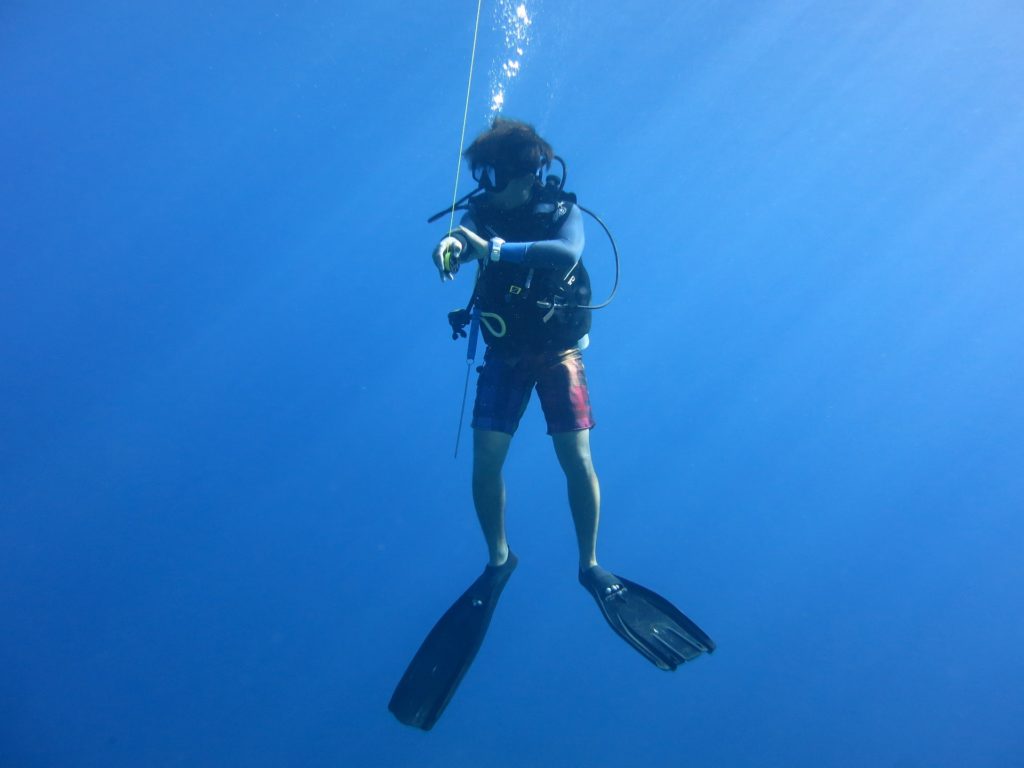
Safety Stops
No matter what your dive tables suggest or what your dive computer says, it is a good idea to always put a safety stop at the end of your dive. Even if there’s no need for a decompression stop, it’s good practice to do a three minutes (minimum) safety stop at 15 feet.
The safety stop provides a chance for your body to get rid of nitrogen and as such to prevent any chance of getting decompression sickness or the bends. If your dive tables or dive computer require you to perform multiple safety stops or a longer one then follow these rules to reduce any chance of bodily harm!
In rough conditions or strong currents, it can be problematic to perform a safety stop. That’s why it’s a good idea to have a line reaching that depth which allows you to hold on to it. Alternatively, perform your safety stop at a slightly deeper and calmer depth like 20 feet or so.
To stay safe you always should calculate your air requirements including a slow ascent and a safety stop on the way up. Don’t deplete your air with no safety when you come up. You should always have air left when you surface just to be on the safe side.
Most dive operators will require you to have a minimum air level when you return to the boat. This is a good practice that can prevent injuries from having to ascend too fast due to having no air left! You’re always better off to surface with too much air left than to not have any air left while you’re still underwater.
Have your Feet Pointing Down During Ascend and Descend
The best way to both ascend and descend is to do it in an upright position. So, in both directions you want your feet to point down. It’s also important to get into this upright position when you perform a safety stop.
Using the upright position when going down or up will provide you with better control. When you’re weighted properly then it’s much easier to maintain this position. This is certainly more difficult for a novice diver and chances are that a beginner diver will have to make more adjustments with their hands and arms which can and will impact the ascent or descent rate. It also will affect the air consumption negatively if a diver has to correct continuously to stay in that position.
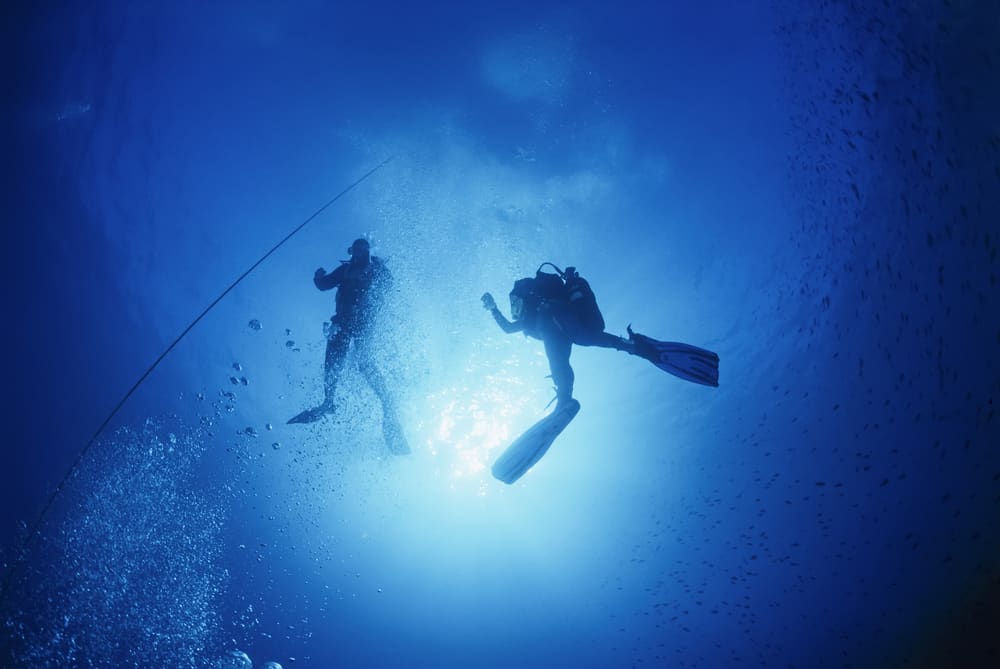
Don’t Forget to Equalize
Stay ahead with equalizing on both going up and down. If you don’t then the pressure in your ears can cause tremendous pain. In the worst case, the pressure can cause injuries. Avoid both pain and the risk of injuries by equalizing often.
It can sometimes happen that a specific technique you try to equalize does not work. If you don’t know of alternatives then stop your ascent or descent and adjust your depth slightly into the direction you came from. Then again try slowly to rise or sink depending on what direction you’re going to.
It is prudent that you are able to equalize in more than one way. The most common technique is to pinch your nose and gently blow into it. This usually does the trick. Sometimes it’s not working though and you should be able to know of at least one other way to equalize. Click to read a guide on different techniques for equalizing.
Your nutrition and lifestyle can also impact your ability to equalize. Alcohol, tobacco and dairy can influence your ability to equalize. It is best if you would avoid these three factors before a dive.
You also should never dive if you suffer from a cold or have sinus issues or a sinus infection. It most likely will prevent you from equalizing and force you to call a dive.
Use Your Dive Computer
Using a dive computer provides you with a trustworthy partner that watches out over you. It will monitor your rate during ascent and descent and alarm you if you’re going too fast.
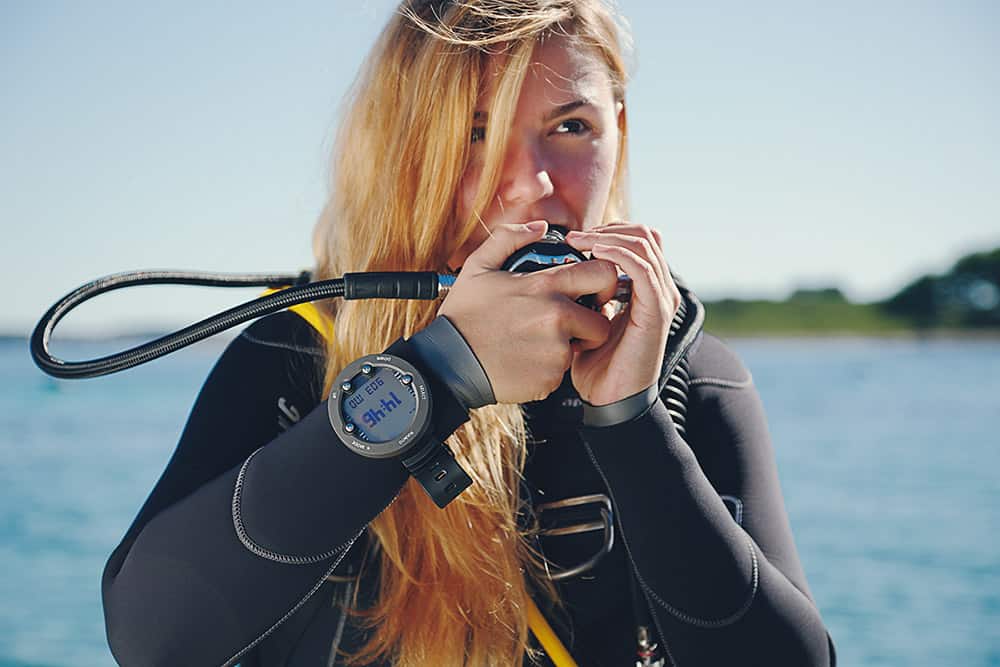
It records all information regarding your dive and provides you with the correct rates for your ascent as well as makes sure you have correctly timed decompression stops on the way up – What is a Decompression Dive? It’s your best chance to prevent decompression sickness and to not come up too fast from a dive.
Know Your Gear
A commonly used tool to warn others that a diver is underwater is to use a surface marker buoy. A delayed surface marker buoy is deployed while you are under water.
The risk with these devices is if you accidentally have the line of them attached to your BCD while you inflate them. The buoy will speed up to the surface and if you are attached to it, you will be dragged along at the same speed. This can very easily cause decompression sickness.
You have to know how your buoy works and make sure that the line is not attached to you during deployment. Make sure that you are also ready to immediately deflate your BCD if for whatever reason you are dragged up. This will counteract the upward movement and give you a chance to stabilize and free yourself from the buoy.
Stay with Your Buddy and Control Each Other
One of the ground rules is to not lose your dive buddy. Make sure you stay with him or her all the time with one exception. If your buddy is going down or up and a rapid speed then catch their attention to make them aware to slow down. Do not try to match their rapid speed!
Inexperienced divers can sometimes speed up during an ascent when they fear that they will run out of air. This will unfortunately often increase the air consumption and get them to increase the rate of their ascent. It is important to check both your own and your buddy’s air levels to reassure each other that you’re not running out of air. In the worst case you at least are able to buddy breath if one of you indeed runs low on air.
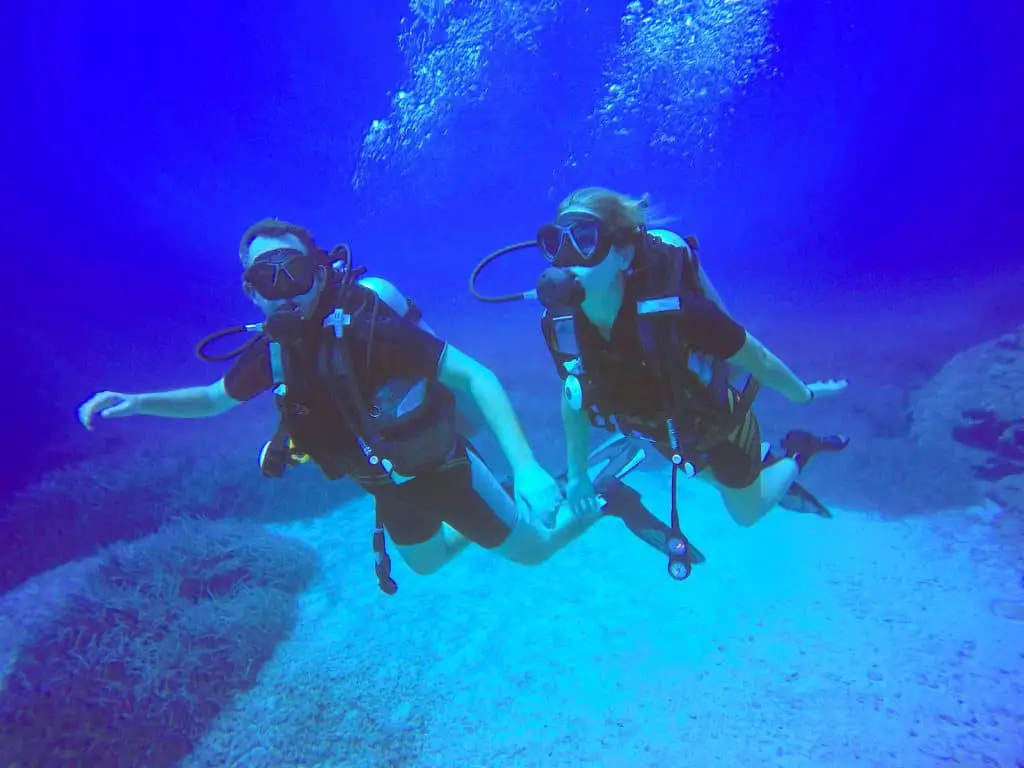
Continue to Breathe
One thing you have to remember is to keep breathing when underwater. Never hold your breath when you’re diving. There’s no situation during any dive in which you want to hold your breath.
This is specifically important during your ascent. If you keep your breath while you’re coming up, the air in your lungs will expand which can in the worst case rupture your lungs and cause permanent damage or have fatal consequences.
During both going down and coming up the pressure around you changes. If you hold your air then the air in your lungs will either compress or expand. This can lead to serious lung injuries. Your number one rule is to continue breathing!
